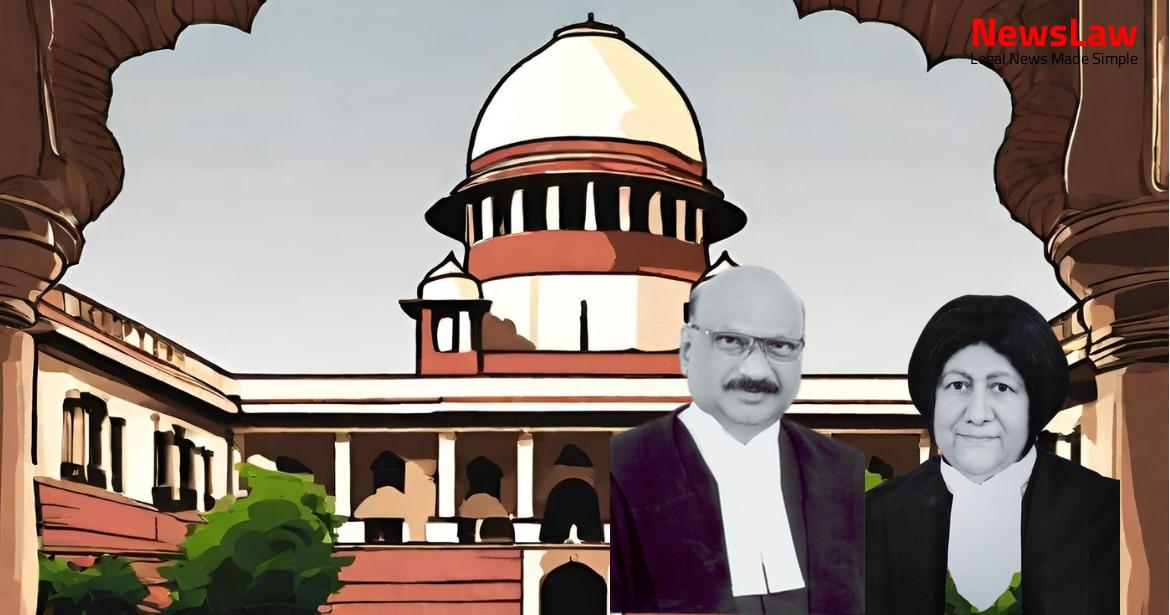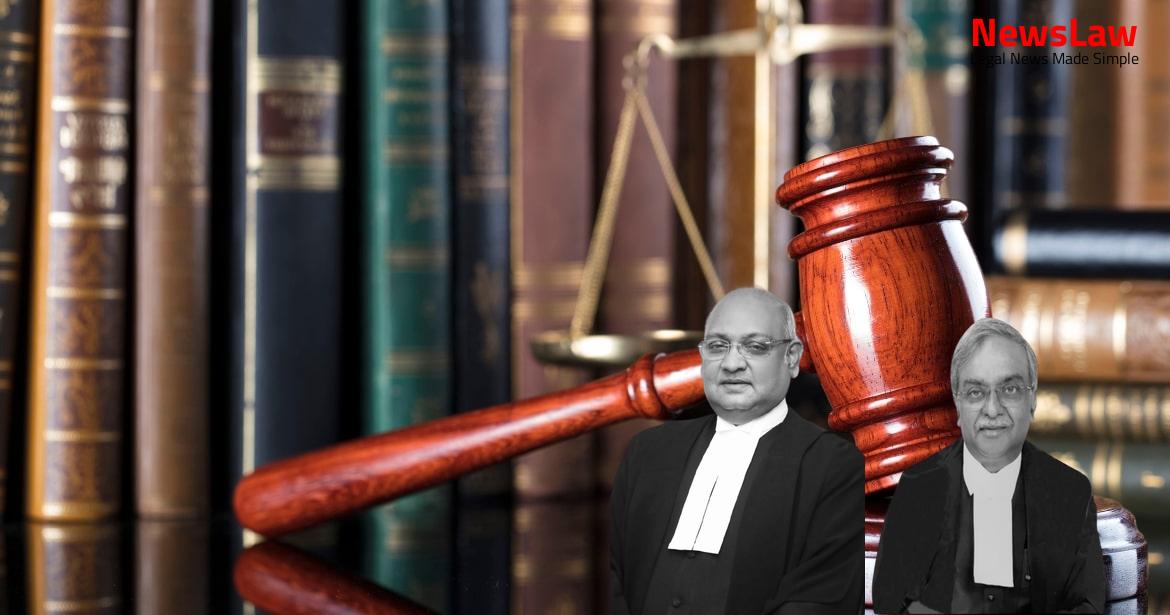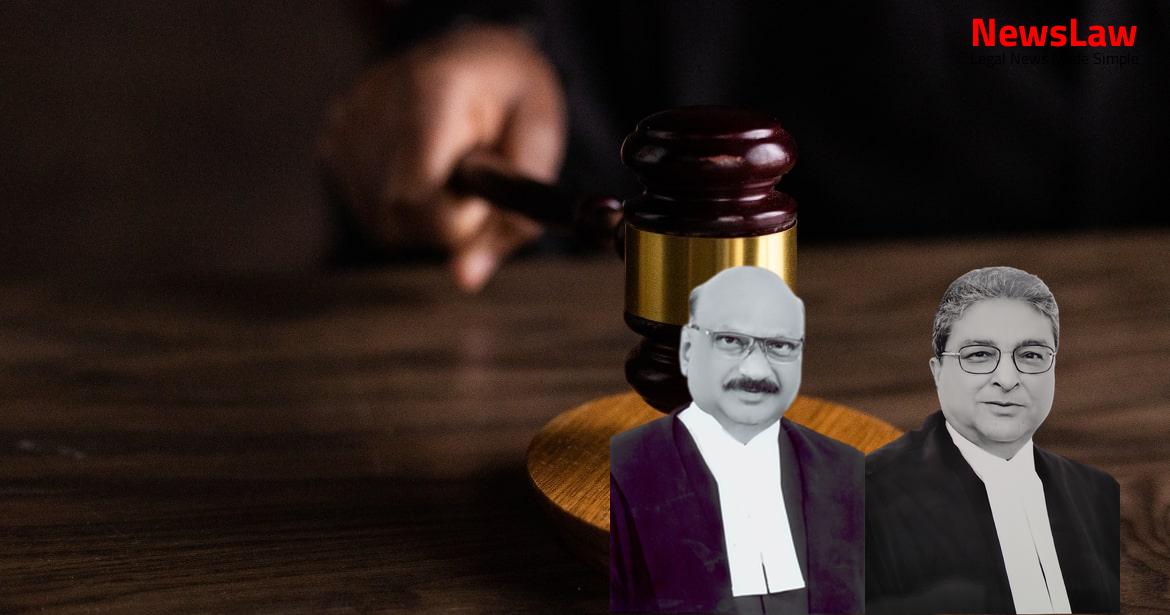Explore the recent landmark decision by the Supreme Court of India regarding the commutation of a death sentence to life imprisonment. This judgment involves a review petition where the Court assessed various factors to reach this consequential outcome.
Facts
- The Trial Court convicted the Petitioner based on various circumstances and pieces of evidence.
- The Review Petition sought to review the final judgment and order confirming the Petitioner’s conviction and death sentence.
- The High Court upheld the conviction and death sentence, deeming it as a rarest of rare cases.
- The Review Petition filed by the Petitioner was dismissed initially, and the decision was later confirmed in an appeal.
- A criminal miscellaneous petition was filed citing a precedent for the reopening of the review petition.
- Petitioner divorced PW-6 and agreed to pay her Rs. 15,000 which deceased Anita promised to bear.
- Deceased 3 opposed this relationship, leading to a serious dispute among them.
- The bodies of four tied children were found floating in a village pond on 21.08.2007.
- The Petitioner was found and arrested on 22.09.2007 after allegedly absconding.
- Deceased Anita knew about Petitioner’s marriage with PW-6.
- Prosecution presented evidence of accused’s motive, last seen with deceased, and extra-judicial confessions from witnesses.
- The deceased were identified as Anita, her children from first husband, and children with the Petitioner.
- The Petitioner murdered Anita and the four children due to strained relationship by strangulation.
- An unidentified woman’s body with mangalsutra was found below a boulder.
Also Read: Tower Infotech Ltd. Bail Order Appeal
Arguments
- The Petitioner’s counsel argued for his acquittal pointing out multiple infirmities in how the evidence has been appreciated by the Courts.
- The case against the Petitioner was built on circumstantial evidence, specifically the ‘last seen’ evidence.
- Errors in the timeline witnesses’ testimonies were highlighted, questioning the reliability of their statements.
- The defense contended that the motive for the crime was weak as the dispute with the deceased had been settled.
- Issues with the extra-judicial confessions were raised, pointing out inconsistencies and lack of corroboration.
- The argument was made that the death penalty should not be imposed solely based on circumstantial evidence.
- Call records and other crucial evidence were not adequately obtained or considered, leading to doubts about the case against the Petitioner.
- Counsel for the State argued in favor of the judgments rendered by the Courts.
- Emphasized that even if the death penalty were to be commuted, a minimum mandatory sentence of 30 years must be imposed upon the Petitioner due to the menace posed to society.
- Highlighted that part of the testimony of PW-6 may have been misread by the Courts, but her evidence against the Petitioner remained strong on aspects like motive.
- Stressed that PW-6 had deposed that the Petitioner admitted to harassing Anita.
- Pointed out that the Post Mortem Report of the deceased Anita indicated asphyxia due to throttling as the probable cause of death, with the examining doctor denying the possibility of self-strangulation.
Also Read: Priority of Employees’ Dues in Asset Sale: SARFAESI Act vs. Land Revenue Code
Analysis
- The testimony of PW-9 regarding the extra-judicial confession made by the Petitioner is crucial in this case.
- The error apparent on the face of the record should lead to a miscarriage of justice to exercise review jurisdiction under Article 137 read with Order 40 Rule 1.
- The observation that the offense appeared to be premeditated and well-planned was considered erroneous by the Court.
- There is no evidence to suggest that Anita’s face was marred beyond recognition.
- The Court acknowledged errors in the appreciation of evidence and must now assess the impact on the conviction and sentence.
- Surmises and hypotheses may be necessary in arriving at a conclusion on how the offense was committed.
- Circumstantial evidence must lead to an exceptional case even for imposing the death sentence.
- The Courts must consider all relevant evidence, including that from the accused, prior to sentencing for a fair evaluation.
- The Court’s review jurisdiction is guided by Article 137 of the Indian Constitution and Order XL Rule 10 of the Supreme Court Rules, 1966.
- The Court recognized instances where errors were made in relying on extra-judicial confessions and observations that were not supported by evidence.
- The prudence doctrine must be invoked in cases relying heavily on an approver’s statement or circumstantial evidence.
- In this case, the Court found the evidence mostly circumstantial, implying a need for a higher standard of proof for the death penalty.
- The Court assessed the nature of evidence, including motive, last seen circumstance, and extra-judicial confessions, and considered them as mitigating factors.
- The Court highlighted the importance of socio-economic background in capital sentencing cases.
- After reviewing various factors, the Court concluded that the death penalty based on the evidence could not be upheld.
- Review proceedings cannot be treated as an appeal in disguise and only should be done in the presence of glaring omissions or mistakes due to judicial fallibility.
- The court relied on various cases such as Ramesh v. State of Rajasthan, Ram Deo Prasad v. State of Bihar, Sushil Sharma v. State (NCT of Delhi), Kalu Khan v. State of Rajasthan, and Sebastian @ Chevithiyan v. State of Kerala to inform the content of the sentencing hearing.
- The court must proactively record all relevant information at this stage, as highlighted in Bachan Singh (1980) 2 SCC 684.
- The decisions in Swamy Shraddhananda v. State of Karnataka and Union of India v. V. Sriharan were referenced, emphasizing the need to record relevant information for sentencing.
- The review petitions were allowed, with the death sentence commuted to imprisonment for the remainder of life without any right to remission.
- The concept of ‘residual doubt’ was elaborated upon in Ashok Debbarma v. State of Tripura, which indicates lingering uncertainty between ‘beyond a reasonable doubt’ and ‘absolute certainty’ in the court’s mind.
- In Md. Mannan (supra), the quality of evidence was deemed a relevant circumstance in the sentencing analysis.
- The court affirmed that the states must permit capital sentencing bodies to demand proof of guilt to ‘an absolute certainty’ before imposing the death sentence.
- The court discussed residual doubt claim and the need for concrete evidence in criminal proceedings, citing various previous decisions for reference.
- The consideration of circumstantial evidence in sentencing was emphasized, with the court pointing out that death sentence may still be awarded based on such evidence.
- The court reflected on the prudence doctrine from Bachan Singh v. State of Punjab, advocating for caution and thoroughness in sentencing decisions.
Also Read: Landmark Judgement on Consumer Rights in Healthcare Sector
Case Title: SUDAM @ RAHUL KANIRAM JADHAV Vs. THE STATE OF MAHARASHTRA
Case Number: R.P.(Crl.) No.-000401-000402 / 2012



